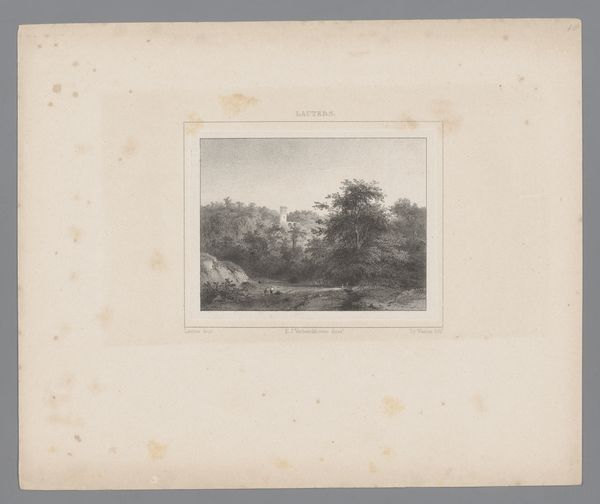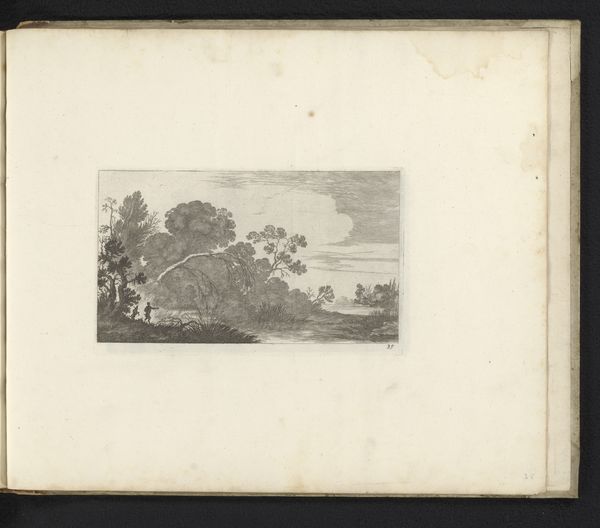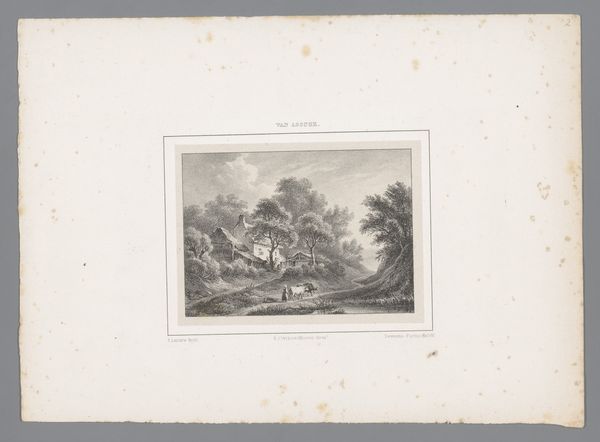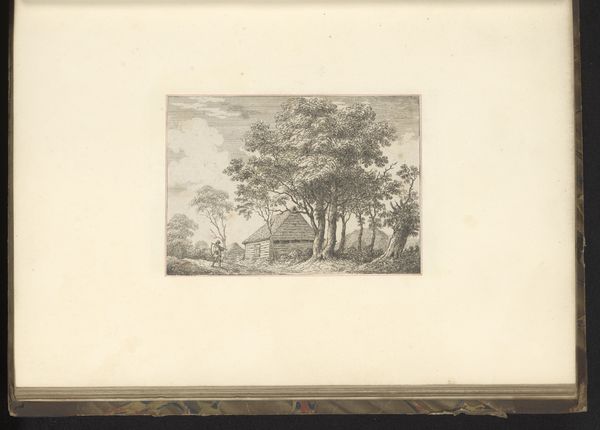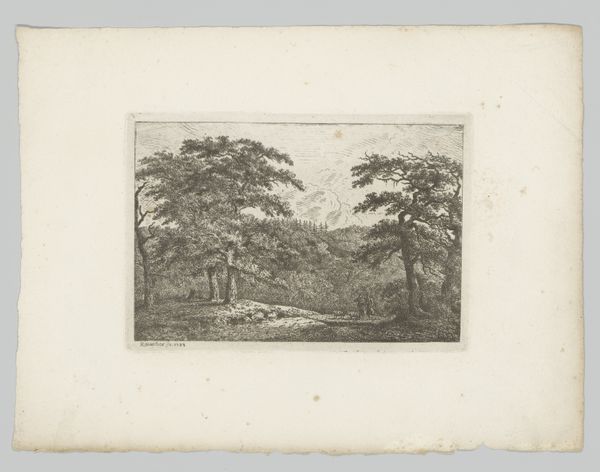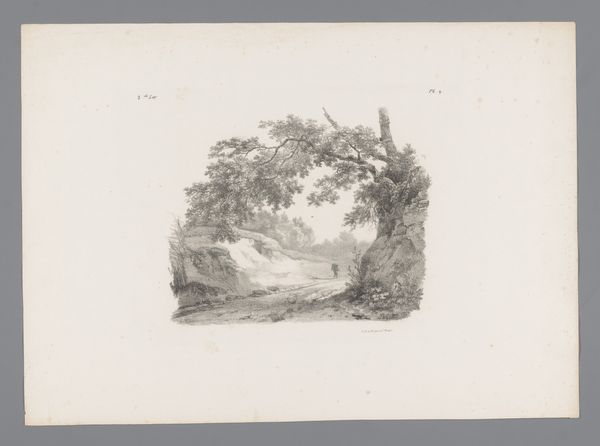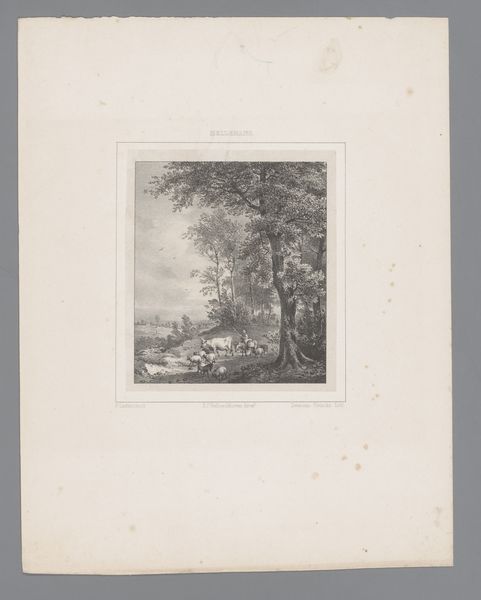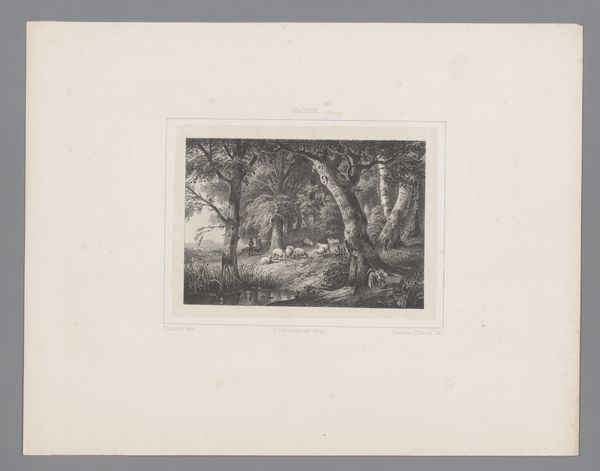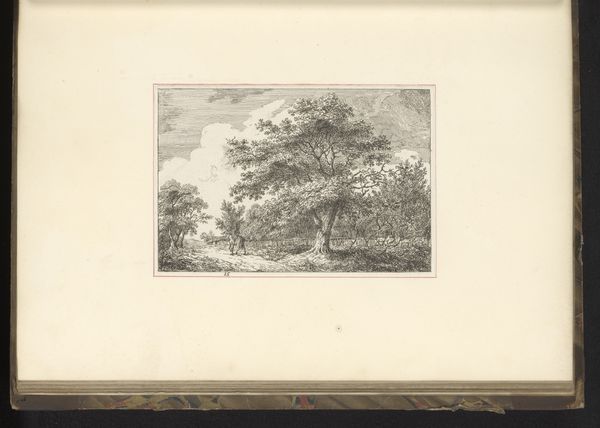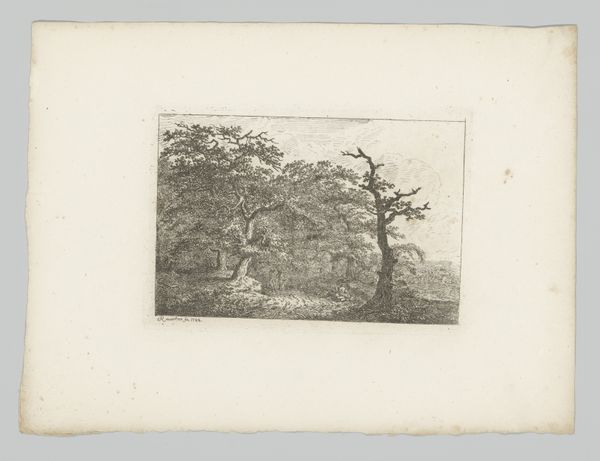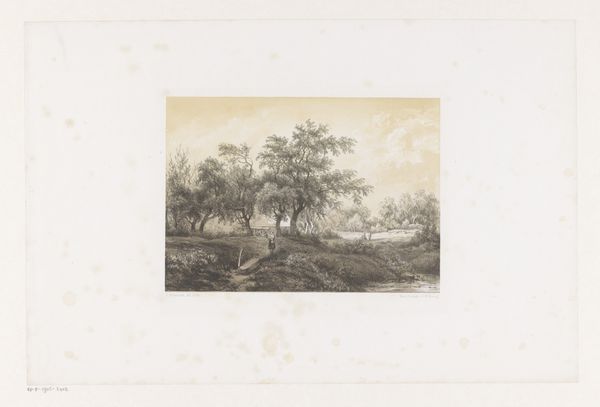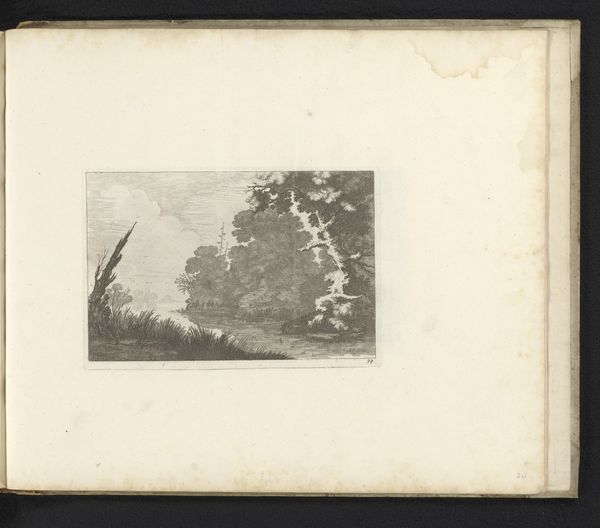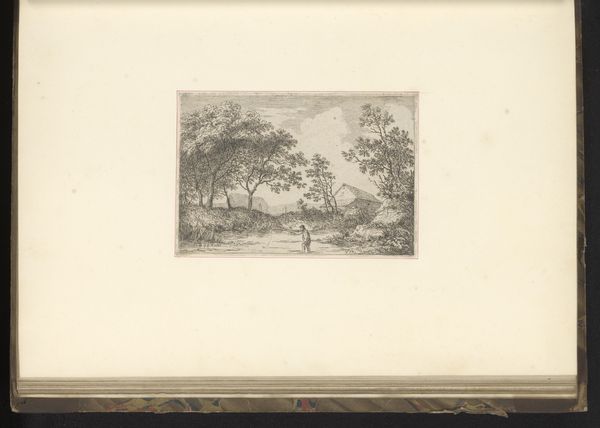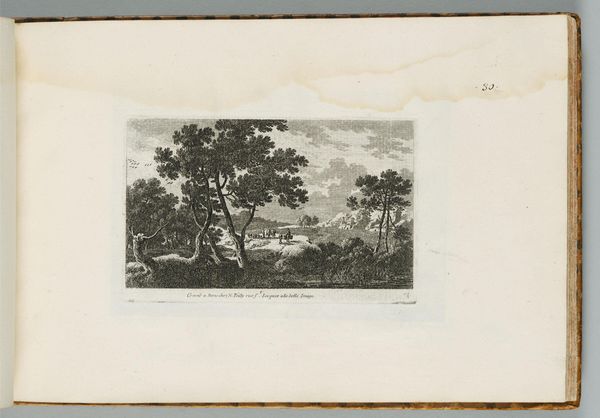
print, engraving
# print
#
landscape
#
romanticism
#
engraving
Dimensions: height 210 mm, width 275 mm
Copyright: Rijks Museum: Open Domain
Curator: We're now looking at "Landschap," a print by Paulus Lauters, created around 1829. It's currently held here at the Rijksmuseum. Editor: My initial impression is one of tranquility tinged with melancholy. The monochromatic palette emphasizes a quiet, almost somber mood. Curator: Absolutely. Consider this work within the Romanticism movement. The landscapes weren't just about depicting nature, but conveying feelings, ideas, and especially the relationship between humanity and nature. Editor: That solitary tree dominating the scene... to me, it evokes the Tree of Life or Knowledge. It feels like it's watching, bearing witness to time and perhaps the passage of civilization itself. Are the figures resting there, perhaps contemplating something profound? Curator: The human figures are tiny compared to the grandness of the landscape, illustrating humankind’s insignificance. We can contextualize this against the backdrop of rapid industrialization—a yearning for an idealized past before progress irreversibly altered nature. Editor: The stark contrast in tone emphasizes a distinct symbolism, that's clear. Perhaps the lighter areas are representations of clarity and the hope that spring can provide? Curator: I interpret the highlights and shadows more politically; highlighting imbalances in nature or life; but this era valued emotion, longing for an impossible idealized time. Consider the engraving itself. It could have been much brighter or darker to create more hopeful or depressing landscapes. Lauters used grey in almost equal measure, allowing viewers to apply their experiences to interpret it as they like. Editor: True. And looking at Lauters use of Romantic techniques shows a yearning for simplicity in complex, turbulent times. Curator: What strikes me about analyzing the history of it, there are more direct conversations that should be happening, politically, to the subject matter that this piece is depicting, while respecting the landscape. Editor: Precisely. Looking through both symbolic and historical lens broadens our perspectives.
Comments
No comments
Be the first to comment and join the conversation on the ultimate creative platform.
